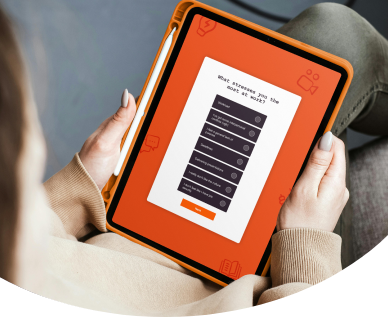When it comes to crafting our résumés, here’s a refreshing truth to keep in mind: perfection is overrated. In fact, résumés can even be too perfect.
Perfect CVs may come across as disingenuous to hiring managers. A recent article in Forbes stated that 67% of hiring managers are able to immediately notice when a résumé is enhanced with AI. While AI is here to stay, of course, it’s important for us all to remember that companies still hire human beings—and being human comes with having human flaws.
Understanding how to transform our perceived flaws into compelling strengths can be the key to landing a role that is not only satisfying but also empowering. David Rendell, author and Optimist Instructor, delves into this very concept in Embrace Your Imperfections, a class found in The Optimism Library, which is designed to inspire us to reassess our personal and professional narratives.
So, how do we present ourselves honestly and confidently enough to land the job?
Here are some pointers:
Identify and Reframe Our “Flaws”
The first step is to identify our perceived weaknesses. Make two columns and write them all down in the first column. Then, use the other column to take each perceived weakness and reframe them not as flaws but as strengths in the right context.
“Many highly talented, brilliant, creative people think they’re not,” David says, “because the very traits that make them unique are often undervalued or stigmatized.”
For example, if we’re often criticized for being overly detailed, we can reframe this trait as thoroughness—a critical skill in fields requiring meticulous attention, such as accounting or software development.
Tailor the Narrative
When preparing for interviews, we should tailor our narrative to highlight how these traits have been instrumental in achieving success. See these weaknesses as what they actually are: continuous lessons in self-improvement.
David says: “To recognize those characteristics, those negative characteristics, those seeming disadvantages, those weaknesses, and to transform them into strengths—it shows ourselves and others our capacity to grow and our gratitude to what we have learned.”
Provide Specific Examples
We should offer concrete examples of how what might be perceived as a weakness has helped us excel in past roles.
So, let’s say we get asked about potential weaknesses in a job interview and decide to discuss “impatience.” We could say, “One trait that can be seen as a weakness is my impatience. However, this trait also drives me to be highly proactive and results-oriented. For example, in my last role, my urgency to push projects forward helped us meet all our project deadlines ahead of schedule. My ability to maintain momentum on projects ensures that we don’t just meet targets but exceed them by continually pushing the team towards efficiency.”
This example demonstrates how we’ve taken a characteristic that could be seen negatively and shown its positive impact in a professional setting, aligning with David’s philosophy that every negative trait has a positive side.
Adjust Our Mindset
Go about life with the mindset that every trait has a dual nature, especially when we go into interviews. If questioned about a weakness, be honest, but remain confident. Pivot the conversation to demonstrate how this characteristic is beneficial, providing those examples that we mentioned in the previous step.
“Those negative characteristics are also positive characteristics,” David says.
It may take some time to get used to this mindset, but once we get used to it, we will feel more balanced, capable, and confident.
Seek the Right Fit
Finally, focus on roles and companies that value our unique skills. “Alignment between personal traits and job requirements is key,” David says. “Find alignment in personal and professional environments that capitalize on natural strengths and you’ll have found somewhere you can operate within at your natural best.”
For more, check out The Optimism Library.
FRIENDLY REMINDER! For a Limited Time, You Can Get Simon’s “The Art of Presenting” and Unlock 50+ Free Career-Building Classes (a $60 Value!). For more, see here.











